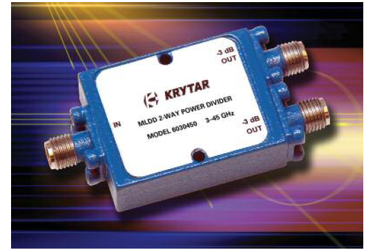Power Dividers Primer

Power Dividers are passive devices used to perform many functions, including splitting or combining signals in amplifiers, switching circuits, and antenna beamforming networks used in a wide range of commercial and military applications where power or frequency needs to be monitored, leveled, alarmed or controlled. RF and microwave systems may require power to be divided between two or more applications.
In these cases, a device to facilitate the division of an input power is required. As the implementation of 5G and 5G NR (New Radio), Wi-Fi 6 and Wi-Fi 6E wireless local-area network (WLAN) protocol, SATCOM internet connectivity and direct to home (DTH) broadcast continues to gain momentum, new high-performance devices, systems, and test and measurement equipment are needed to support the ultra-high frequencies and high data rates that technologies like mmWave, multi- input multi-output (MIMO) antenna and RF frontend technology, beamforming and full duplex demand.
Important specifications when determining how to use a power divider includes insertion loss, amplitude and phase balance and return losses. For power combining of uncorrelated signals, the most important specification is the isolation, which is the insertion loss from one equal power port to the other.
The power divider splits an input signal into two or more outputs that are usually, but not always, equal in amplitude and phase. Power dividers are available in a number of configurations including 2-way, 4-way and 8-way. Regardless of its type, the goal of every power divider is to have the greatest port-to-port isolation, lowest insertion loss and voltage standing wave ratio (VSWR), and least amplitude and phase imbalance over the entire frequency range of the device.
Get unlimited access to:
Enter your credentials below to log in. Not yet a member of RF Globalnet? Subscribe today.
